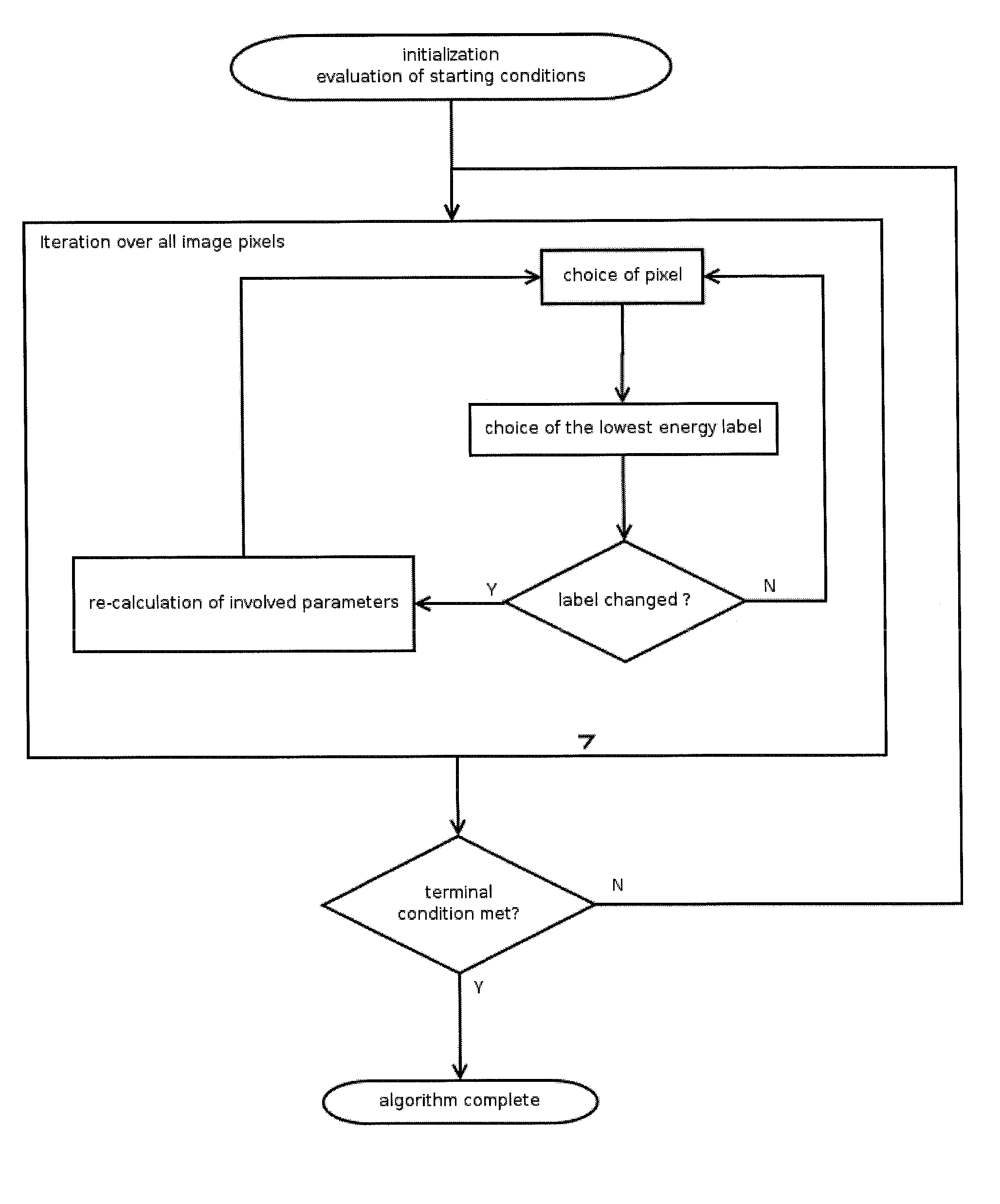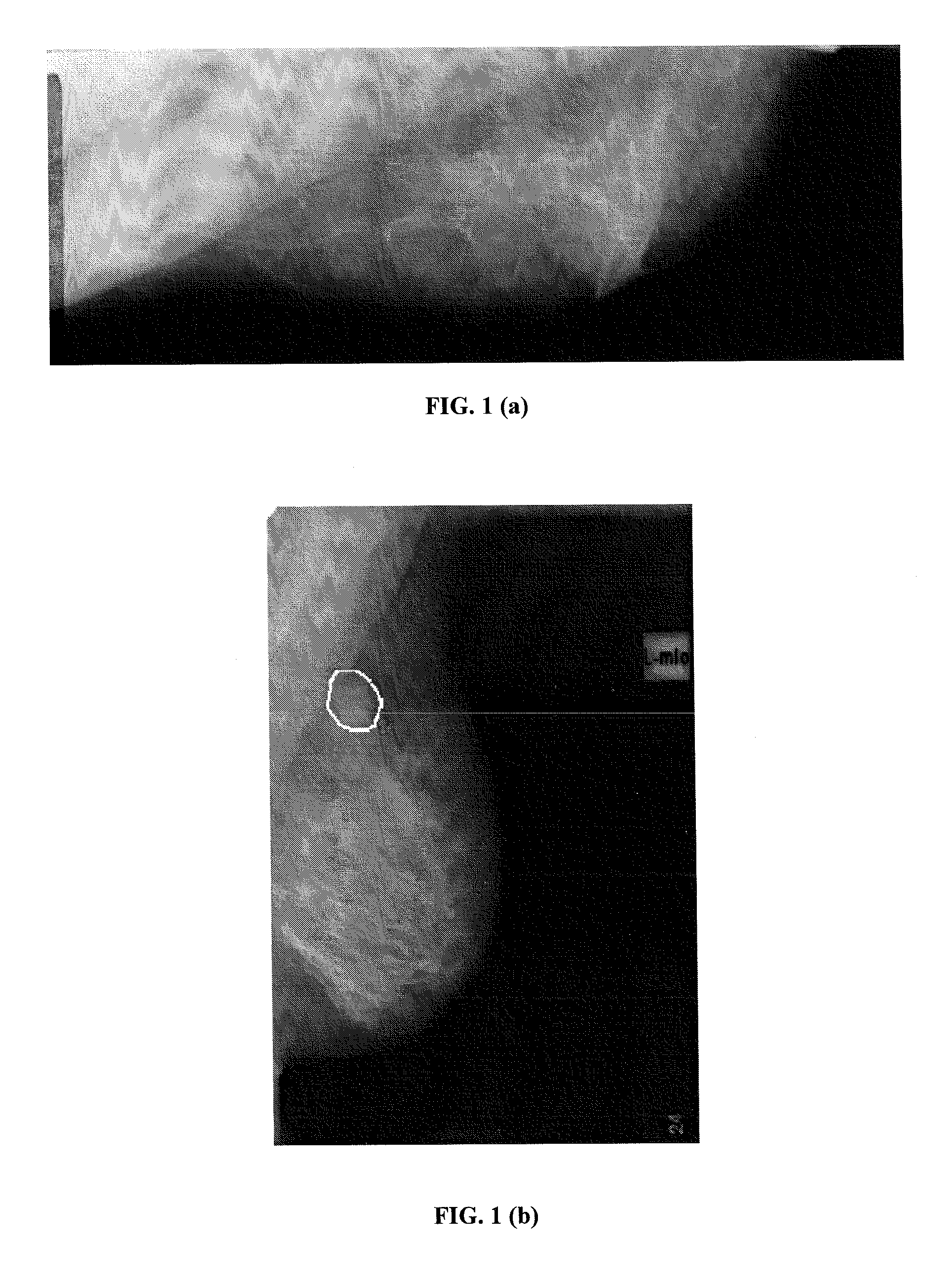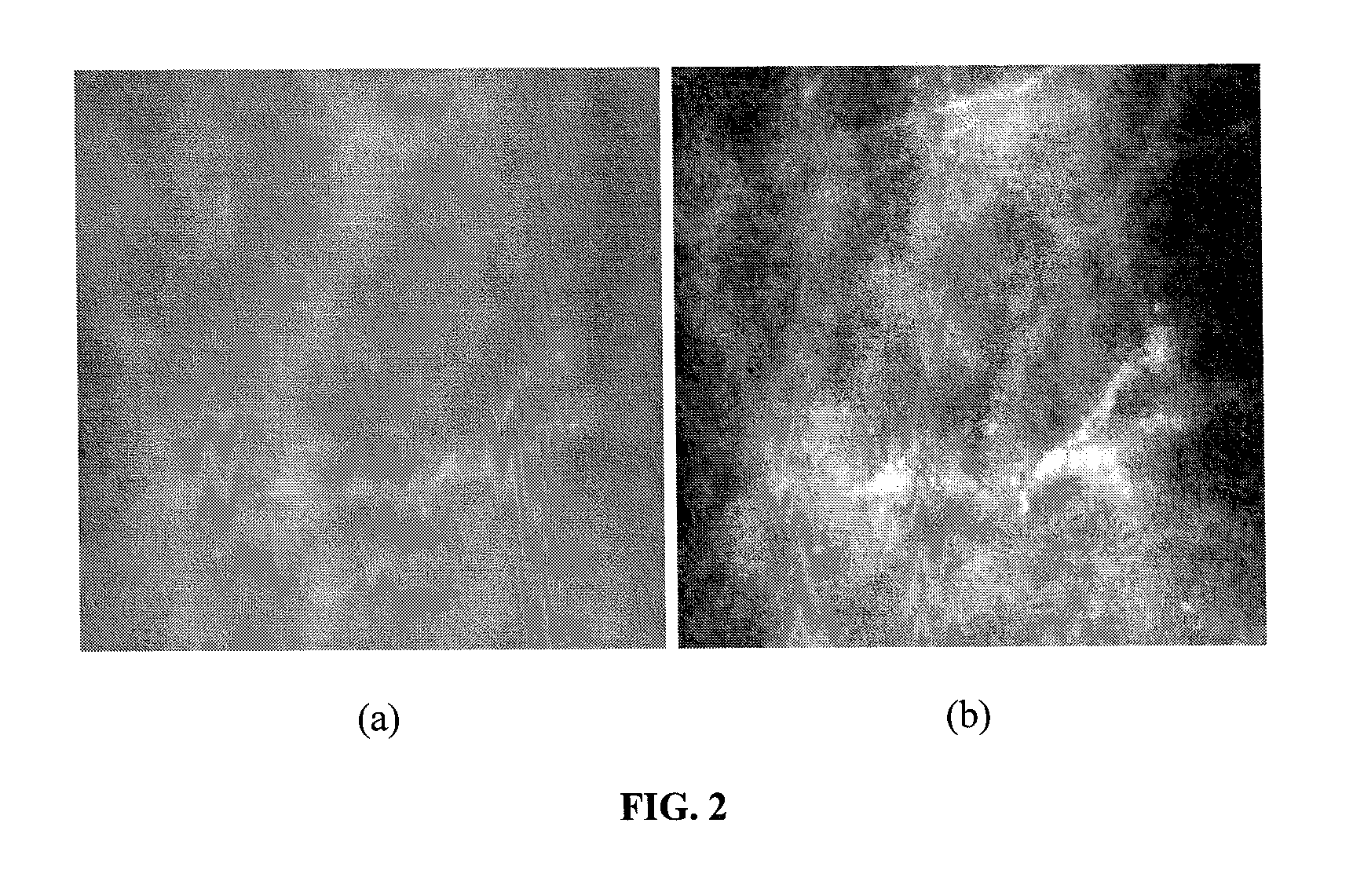Method for Segmenting Digital Medical Image
a digital medical image and segmentation technology, applied in image enhancement, image analysis, instruments, etc., can solve the problems of increasing the complexity of the breast cancer diagnosis task, the detection step, and the reliance on the segmentation step, so as to achieve the effect of improving the outcom
- Summary
- Abstract
- Description
- Claims
- Application Information
AI Technical Summary
Benefits of technology
Problems solved by technology
Method used
Image
Examples
Embodiment Construction
[0046] A new pixel clustering model is disclosed here and applied to the analysis of digital mammograms. The clustering represents the first step in a more general method of mammographic analysis and aims at the creation of a concise data-set (clusters) for automatic detection and classification of mammographic structures such as the pectoral muscle and the breast outline on the one hand and lesions such as masses and micro-calcifications on the other hand. The lesions are typically the first symptoms analyzed in early diagnosis of breast cancer. The image pixels are described by their intensity (grey level) or a multi-dimensional feature vector. Multidimensional decompositions may be obtained by applying multi-scale filter banks or texture operators.
[0047] A Markov Random Field (MRF)-based technique is introduced that is suitable for performing clustering of images characterized by poor or limited data. The proposed method is a statistical classification model that labels the imag...
PUM
 Login to View More
Login to View More Abstract
Description
Claims
Application Information
 Login to View More
Login to View More - R&D
- Intellectual Property
- Life Sciences
- Materials
- Tech Scout
- Unparalleled Data Quality
- Higher Quality Content
- 60% Fewer Hallucinations
Browse by: Latest US Patents, China's latest patents, Technical Efficacy Thesaurus, Application Domain, Technology Topic, Popular Technical Reports.
© 2025 PatSnap. All rights reserved.Legal|Privacy policy|Modern Slavery Act Transparency Statement|Sitemap|About US| Contact US: help@patsnap.com



